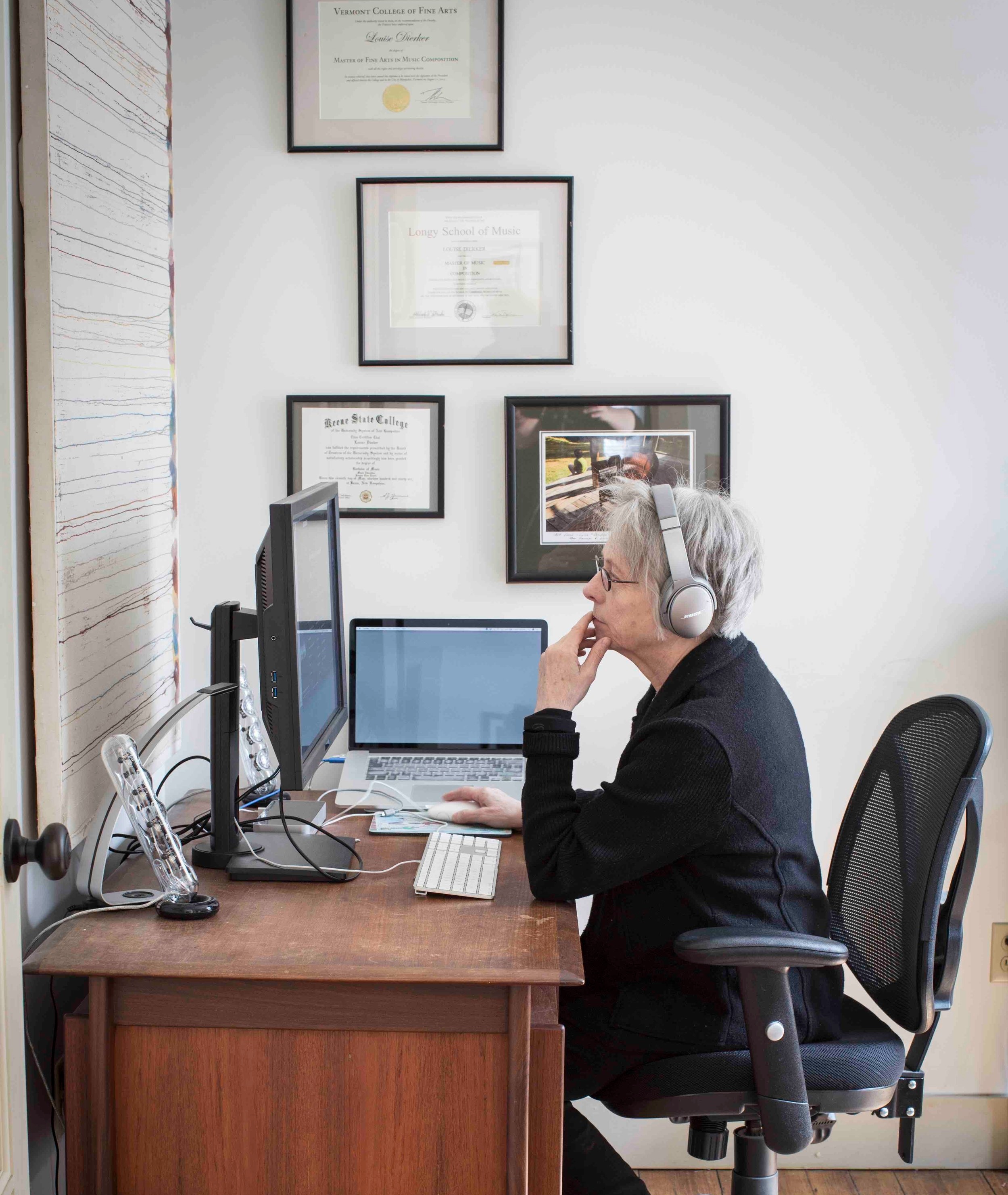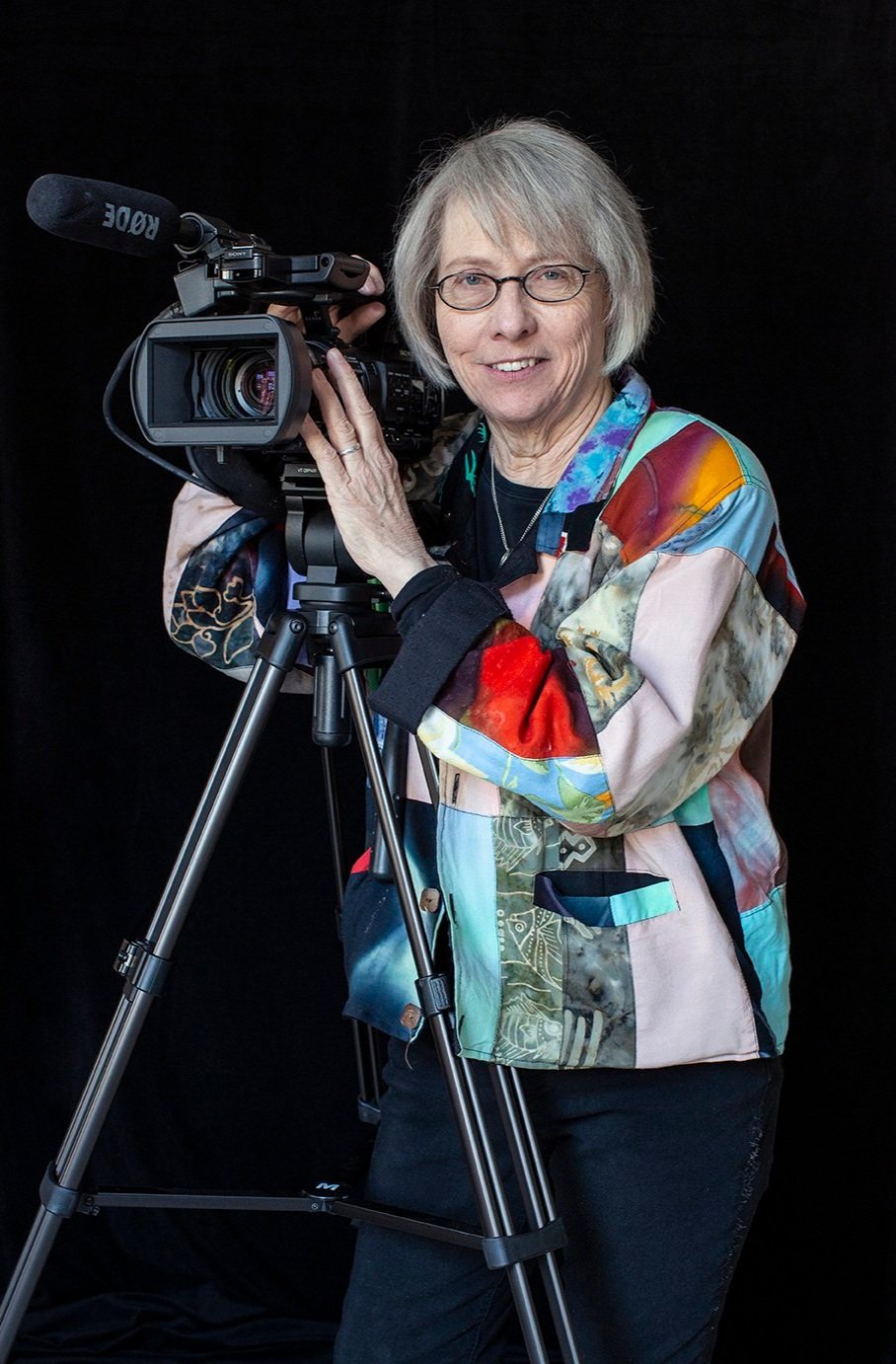Girls’ Rules
L.A. Dierker composing music in her studio (Photo by Lori Pedrick)
Lori Pedrick is a talented photographer, art director, and designer, who I first met when I hired her to take some new headshots for my website. Lori’s Growing Up Girl series began as a personal photography project during her studies at New Hampshire Institute of Art and eventually became her graduate thesis project. I was honored when Lori asked me to participate. Here is her mission statement:
Growing Up Girl is a collaborative project celebrating individualism, beauty, and the empowerment of women. The basic premise is to promote a healthier, positive message for women of all ages, ethnicities, body types, and backgrounds. Since my portrait sessions are basically my interpretations of each of my subjects, I wanted to find a way where each individual could have a voice too. I’ve invited each participant to write a short personal essay about being a woman. Their stories, coupled with my images, are incredibly powerful. This is a collection of stories from many courageous women, with lived experiences. It is a chance for each participant to share, be seen and be heard. The goal is to inspire young women and girls to feel more confident and self-assured. We all have great perspective in our own individual ways. Considering all that is in flux with our world today, I feel this message is vital.
Lori’s portrait is included below, alongside my own short essay for the project. (You can see the original piece and listen to an audio recording of the essay on Lori’s website.)
Girls’ Rules
From Lori Pedrick’s Growing Up Girl Series
I remember it all clearly still, these many, many years later; the moment I was confronted with the world where “growing up girl” meant closed doors.
As a little girl, living on a small farm in the rural Midwest, there were few restrictions as I explored the fields and woods of our home. The chores—bringing in and preparing the produce from the garden, caring for the animals, and mowing the lawn—were undertaken as age, size, and strength allowed. We were all expected to pitch in and get the work done. When I finally could manage the powered lawn mower and was permitted to mow the lawn, I was so proud (little did I know that the encouragement of my older siblings came with ulterior motives).
For me, one of the joys of spring was recess, which, after winter snows, would again include pick-up games of baseball on the diamond behind our small township elementary school. All who wished could play ball. We brought our own gloves and bats from home and created bases from materials at hand. As a developing ten-year-old, I loved playing sports. My dad and I spent many hours, hitting and catching balls in our spacious yard. I was proud of my growing strength and proficiency. At school I was seen as one of the better players and was enthusiastically included at “choosing up” time. There were few girls in my age group at school, and no others were interested in playing ball, also true of some of the boys.
One day, as our fifth grade school year drew to a close, the usual routine was interrupted. Sitting in our classroom, eager for the bell signaling the end of school, a number of adult men entered the room. All the boys were instructed to stand in a line to talk to the men and take a look at the contents of the large bags they brought with them. I sat in silence as the boys gleefully pulled handsome new bats and “official” baseball uniforms from the bags. All were thrilled except my friend Johnny. He stood, mortified, when he was assigned a uniform. Johnny, who never played ball with us, was now expected to sign up for the newly formed Little League team. Girls were not allowed to join.
As I sat quietly against the opposite wall, Johnny looked up, straight at me. I returned his gaze. In that moment, we shared our sadness; he for me, me for him. For him “growing up boy” meant unfair expectations, and for me “growing up girl” meant unfair limitations.
I would like to say that this inequality did not persist, but it did, in high school and college. We girls (always girls) played by “girls’ rules” such as half-court basketball and a two-dribble limit. In contrast to the boys, we put together uniforms ourselves; matching shirts from home, with numbers added in adhesive tape. The limited interscholastic games were informally arranged by our one physical education teacher. (This was a drastic change from my mother’s era 30 years earlier. Her high school girls’ team played a full interscholastic schedule with full court basketball in official uniforms). Interscholastic gatherings in college were called “play days” and the meager athletic facilities for girls were greatly inferior to the men’s.
With a supportive mother and father, I learned from my experience in the fifth grade, and charged ahead! I put on “blinders” and ignored the reality of that “girls’ world.” When faced with closed doors, I turned around and found the open ones. Passage through many of those open doors came with quotas limiting women. Thus higher grades and test scores were required to gain acceptance into schools and programs. I just worked harder.
Looking back, I am grateful. The discipline and focus needed to gain access to opportunities has held me in good stead, as has the physical strength and stamina developed on the farm in my childhood. Putting on “blinders” when necessary, I will continue to explore my world as a composer and filmmaker. God willing, I hope to have many years ahead.
— L.A. Dierker, M.D., M.P.H., M.Mu., M.F.A.


